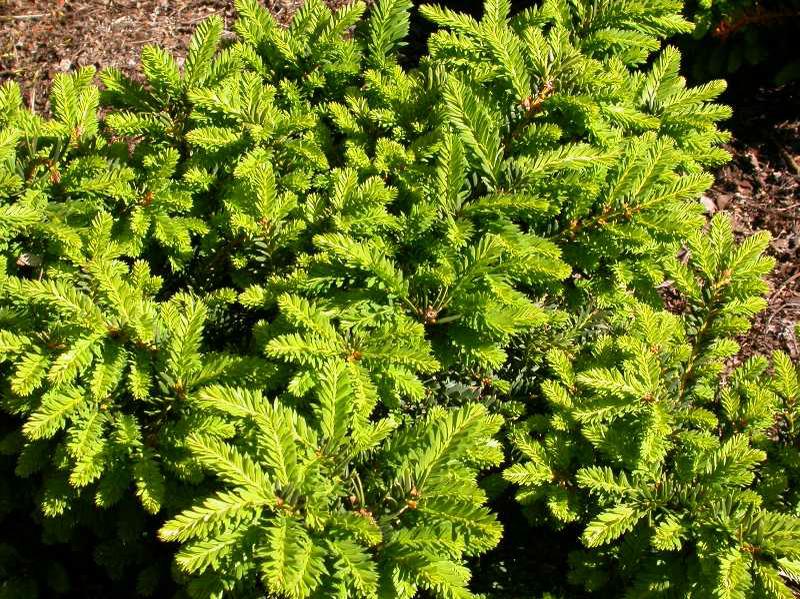Japanese yew (Taxus cuspidata ‘Monloo’ EMERALD SPREADER)
Japanese yew
Taxus cuspidata, commonly known as Japanese yew, is a broad-columnar needled evergreen tree or multistemmed shrub that is native to Korea, China, Russia and Japan. In its native habitat, it will grow to as much as 30-50’ tall. In cultivation it will grow much smaller, particularly if regularly pruned. It features linear, spiny-tipped, dark green needles (to 1” long). Leaves are often tinged yellow beneath. Foliage may turn reddish-brown or yellow in winter. Scaly, reddish brown bark. Plants are dioecious (separate male and female plants). Female plants produce berry-like cones made up of a single seed surrounded by a red, fleshy structure called an aril. The aril is formed by two fused, modified scale leaves.
Genus name is an old Latin name for yews.
Specific epithet is in reference to the cuspidate (having a sharp pointed tip) foliage.
EMERALD SPREADER is a compact, dense, spreading Japanese yew cultivar that typically matures very slowly over 20 years to 2 1/2’ tall by as much as 9’ wide. According to patent documents, EMERALD SPREADER is distinguished from other T. cuspidata cultivars by having small dense needles, symmetrical low growth, shorter rigid branching and an overall denser appearance. Dark green needles (5/8” long) generally retain good color in winter.

Easily grown in average, medium moisture, well-drained soils in full sun to part shade. Tolerates shade and is considered to be one of the best of the needled evergreens for shady conditions. Prefers moist, sandy loams, but plants have no tolerance for wet conditions which must be avoided. Good soil drainage is essential. Tolerates urban conditions. Best sited in locations protected from cold winter winds. Tolerates pruning well. Pruning is best done in early spring, but may be done at any time.
| Hardiness zone | 4 - 7 |
| Sun light | Full sun to part shade |
| Water | Medium |
| Maintenance | Low |
Susceptible to winter burn, particularly in exposed sites. Twig blight and needle blight are occasional problems. Root rot may occur in poorly-drained soils. Weevils, mealybugs and scale are problems in some areas.
Foundations, screens or accents. Groupings.
| Common name | Japanese yew |
| Botanical name | Taxus cuspidata 'Monloo' EMERALD SPREADER |
| Plant type | Needled evergreen |
| Family | Taxaceae |
| Hardiness zone | 4 - 7 |
| Water | Medium |
| Maintenance | Low |
| Flower color | Non-flowering |
| Flowering period | Non-flowering |
| Height | 1 - 2.50 feet |
| Width | 1 - 9 ft. |